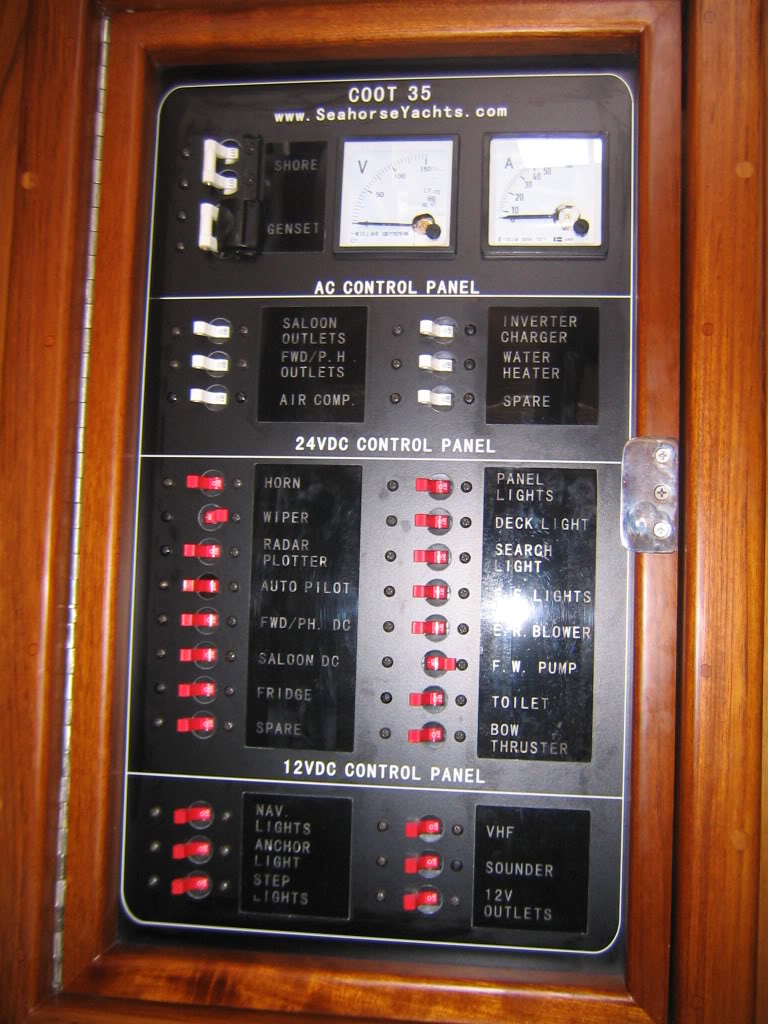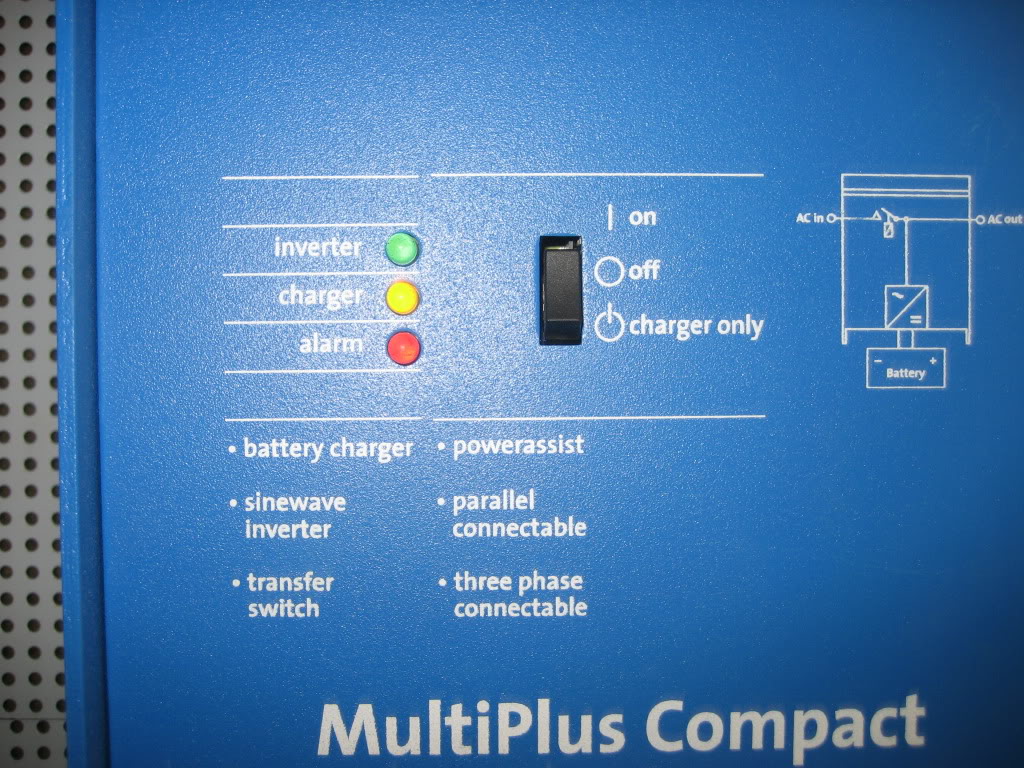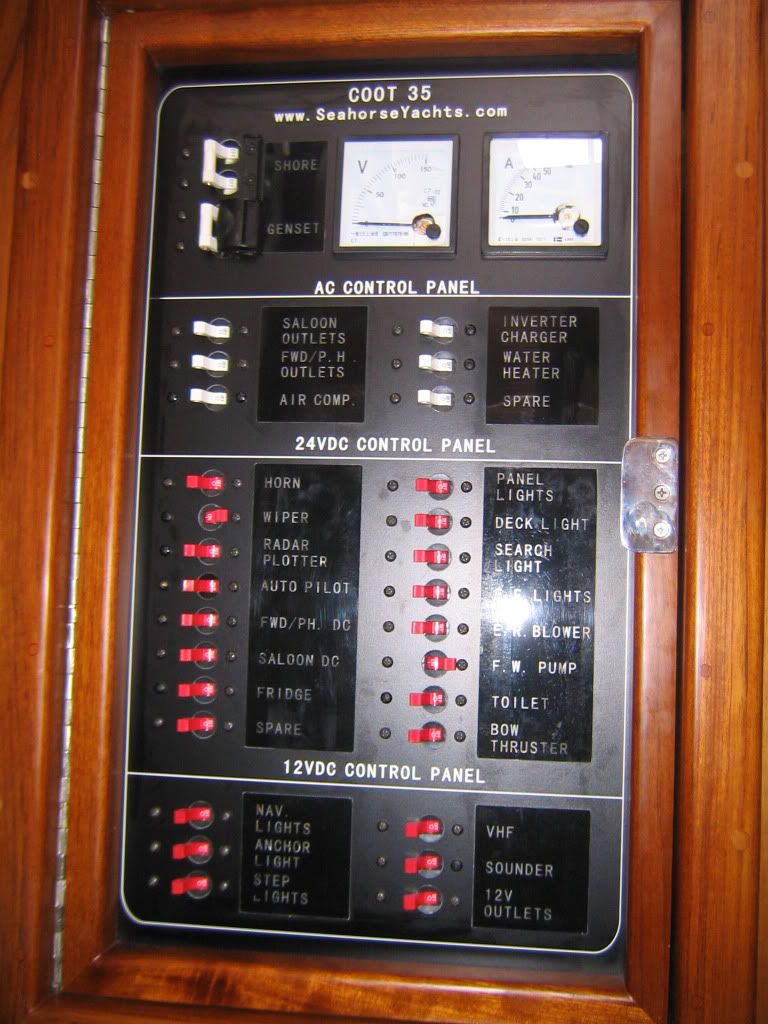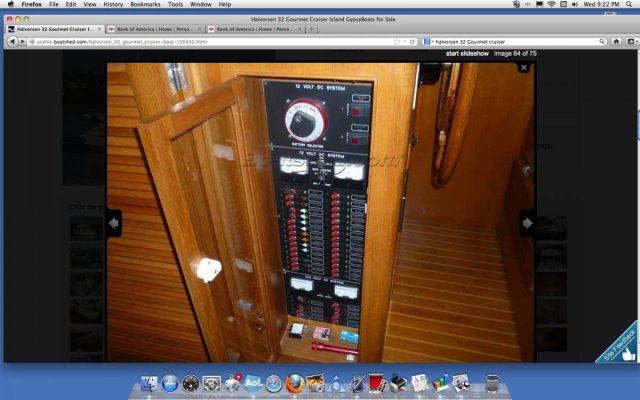Ben
Guru
- Joined
- Dec 10, 2007
- Messages
- 758
- Location
- US
- Vessel Name
- Silver Lining
- Vessel Make
- Heritage East 44 / Twin Perkins T6.3544
Just curious - but for wiring convenience, could you not send your primary DC electrical power feed to different points in the boat - like fore, aft, and fly bridge have multiple small panels instead of one large one?
Are there advantages to this?
I thought to put a panel on the fly bridge for electronics since 90% of my piloting is from there and run the power up there rather than wiring to the main panel in the pilot house. Am I crazy to want to do is? Why shouldn't I?
Are there advantages to this?
I thought to put a panel on the fly bridge for electronics since 90% of my piloting is from there and run the power up there rather than wiring to the main panel in the pilot house. Am I crazy to want to do is? Why shouldn't I?




